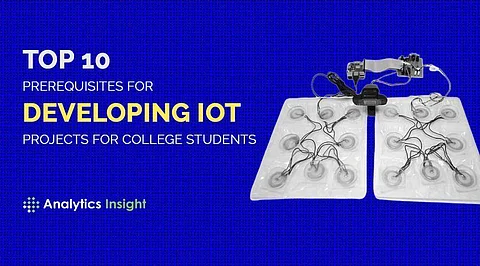
- Insights
- Cryptocurrencies
- Stocks
- White Papers
- Industry
- Geography
- Insights
- Cryptocurrencies
- Stocks
- White Papers
- Industry
- Geography


IoT hardware is quite specialized. They are made to function in a variety of extremely particular situations. There is a wide variety. Even though you can prototype with generic off-the-shelf hardware, you can eventually progress to designing and developing custom PCBs and components that suit prerequisites for developing IoT projects.
The IoT projects are built on connected gadgets. These IoT gadgets, which can be found on everything from industrial machinery and buildings to freight shipments and pipelines, send data and keep track of certain parameters. A common design protocol is used to create both hardware and software components for IoT projects for college students, which are then combined with a communications network. It is impossible to generalize hardware architecture due to the abundance of IoT applications currently available. But that shouldn't prevent you from adhering to a framework. In this article, we discuss the top prerequisites for developing IoT projects.
IoT security is a crucial component. It must be taken into account at every step of design and development. Even while prototyping, the security and integrity of the data recorded by any device must be maintained. The IoT devices, your network, and the cloud, mobile, and web service applications all have security needs
In order to quickly and simply get your IoT device up and running, take data, and talk with other devices and the cloud, simplicity of development is another top priority necessity while prototyping. Take into account the support services, development tools, and API documentation provided by the hardware vendor or by the developer community
The volume of data to be processed, which affects data processing and storage needs, depends on the number of connected sensors, the resolution of the data that is gathered, and the sampling rate. How frequently a device connects to transfer data upstream determines how much data has to be stored on the device.
The operating range, the required signal transmission range, and the projected data transmission volume and rate are all connectivity requirements for wireless networking. Think about fault tolerance, which refers to a device's capacity to rejoin and deliver data again after becoming detached.
The power needs of the device will be influenced by a variety of additional requirements, such as the number of sensors required and the pace of network transmission. Think if your gadget will need a portable power source, such as a battery or supercapacitor, or if it will be hardwired for electricity. If it needs a portable power source, like a battery, you need to know the specifications for the battery's size, weight, and capacity. You also need to know if the battery has to be recharged, replaced, or thrown away after it runs out of power. How frequently and how should the gadget be recharged if it is?
The shape and size of the gadget are also part of the physical device design specifications. The environment in which the item will be put must also be taken into account; will it require a ruggedized or waterproof casing, for instance.
The price of the hardware comprises the upfront cost of the hardware and related parts as well as ongoing running expenses for things like electricity and maintenance costs for things like repairing worn-out or malfunctioning parts
"Computer-aided design and drafting," sometimes known as CAD, is a technology that makes it possible to create design and technical documentation by automating the laborious process of drawing. Designing mechanical and industrial components uses it.
No matter what sector you work in, protecting and safeguarding your data is a significant matter. It is preferable to provide various approaches for consumers to construct and own their IoT private network from beginning to end in order to have secure networking.
When your IoT project has advanced incrementally, you should start thinking about how to manage new IoT apps. Your IoT project can advance if you have a conversation about this matter with the company leaders and decision-makers involved in the process.
